Introduction
The P30 Pro may be the star of the show, but let's not ignore the non-Pro P30 - the slightly down-specced model in Huawei's just-announced P-series roster. While we had the P30 Pro for an extended time (you can't have missed the review), the P30 we only managed to snatch for a brief hands-on, so here it goes.

Okay, not so fast, let's first go over the specs real quick. The P30 has a smaller display than the Pro, but it's AMOLED nonetheless. It's got a conventional earpiece as opposed to the acoustic screen of the Pro, and while not necessarily directly related - it drops the IP rating from IP68 to IP53.
The camera setup is also not quite up to the Pro standard. The main unit is still 40MP, but it's got a dimmer lens here and it's also not stabilized. Gone is the 5x periscope telephoto, replaced by the conventional 3x 80mm one that was also on the Mate 20 Pro (so there still are Pro bits in the P30). The ultra wide angle cam isn't Pro though - it's the 16MP 17mm one from the Mate 20, as opposed to the 20MP 16mm one on the P30 Pro/Mate 20 Pro. No ToF camera on the P30 either, but there's the laser instead.
Huawei P30 specs
- Body: Dual-glass with metal frame; IP53-rated for dust and water resistance; 149.1x71.4x7.6mm.
- Screen: 6.1" AMOLED, 1,080x2,340px resolution (422ppi); tiny notch.
- Chipset: Kirin 980 chipset, octa-core processor (2x2.6GHz Cortex-A76 + 2x1.92GHz Cortex-A76 + 4x1.8GHz Cortex-A55), Mali-G76 MP10 GPU, graphene film and heat pipe with vapor chamber cooling system.
- Memory: 6/8GB RAM, 64/128/256GB storage (expandable via Nano Memory - hybrid slot).
- OS: Android 9 Pie with EMUI 9.1.
- Camera: Main: 40MP (RYYB filter), f/1.8, 27mm; telephoto: 8MP, f/2.4, 80mm, f/2.4, OIS (3x optical zoom); ultra wide: 16MP, f/2.2, 17mm. 4K video capture, 720@960fps slow-mo, Leica branding.
- Selfie cam: 32MP, f/2.0 Leica lens, Portrait Mode with live bokeh effects.
- Battery: 3,650mAh; 22.5W Huawei SuperCharge.
- Security: Fingerprint reader (under display).
- Connectivity: Dual SIM, Wi-Fi a/b/g/n/ac, Dual-band GPS; Bluetooth 5 + LE, NFC, USB Type-C.
- Misc: IR blaster, stereo loudspeakers (bottom-firing main one plus earpiece).
Other changes include a slightly smaller battery (3,650mAh vs. 4,200mAh) plus the omission of the 40W charging system - the P30 only gets the 22.5W SuperCharge. Not only that, but there's also no wireless charging.
The P30 has the under-display fingerprint sensor too, the Kirin 980 top-tier chipset ticks inside, and has RAM and storage options like Pro - no differences here.

Okay, with the hardware differences mostly sorted out, let's proceed to the hands-on area.
Huawei P30 hands-on
The Huawei P30 is a natural evolution of the P20 design with some Mate 20 tech added. This means it's instantly recognizable as a part of the same family with the camera assembly in the top right corner with Huawei and Leica branding prominently showing its roots.
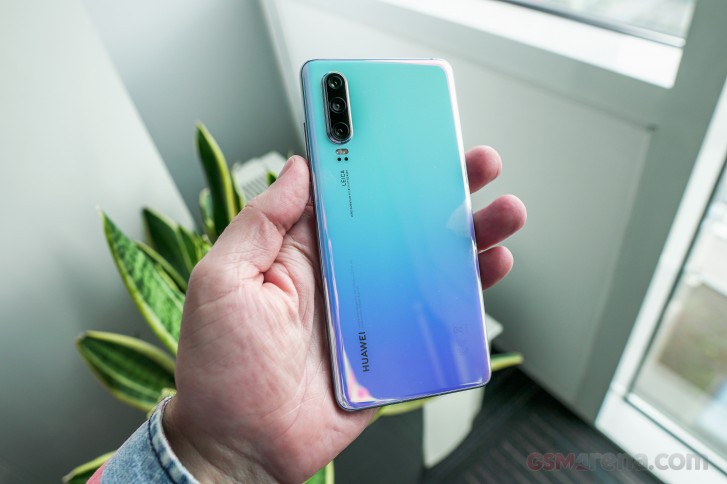
It's three cameras in there this year, while the P20 only had two. Sharing a window on the back, the modules include a Huawei-exclusive, Sony-made 40MP Quad Bayer sensor with an RYYB filter. The Y is for yellow, and Huawei says it should be able to collect more light than the more conventional G (green). This imager is the same as on the P30 Pro, but the lens on this vanilla P30 here is dimmer (f/1.8 vs. f/1.6), and it's not stabilized unlike the Pro's.
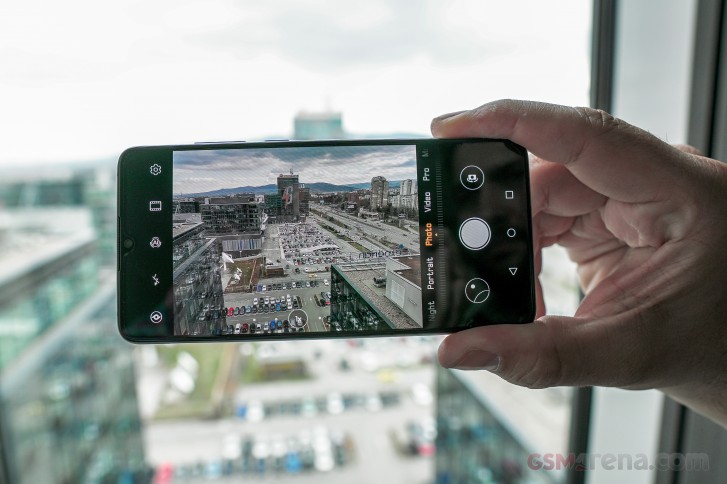
Next up is the telephoto module, which the Mate 20 Pro was kind enough to share with the P30. So the P30 gets an 8MP 80mm-equivalent camera that delivers 3x optical zoom if you count from the main module's 27mm. For telephoto the P30 Pro is packing a 5x zoom periscope, but this P30 is no Pro, yet it still has more zoom than any of the big-name competitors.
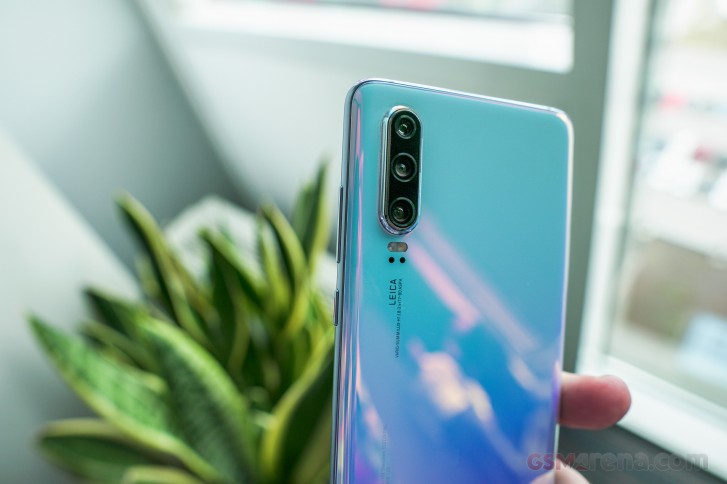
Like most of them, the P30 also has an ultra-wide cam and this is the 16MP 17mm one lifted right off the Mate 20. This means it's not the absolute best 20MP 16mm shooter Huawei reserves for the Mate 20 Pro and P30 Pro. You can't not have segmentation, we get it, and in this case it's not really that big of a deal.
The P30 keeps the laser autofocus which is replaced by a ToF camera on the Pro. That's what the two tiny openings in between the camera assembly and the flash on the back of the P30 are for.
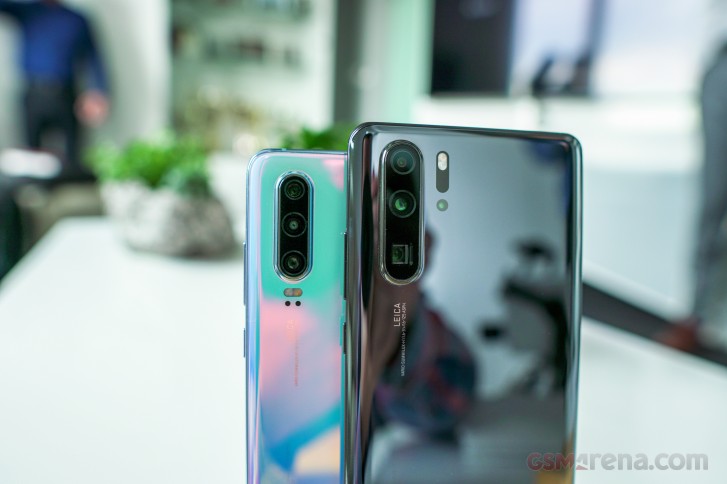
There's no segmentation when it comes to the color schemes and the P30 comes in the same Black, Breathing Crystal, Aurora, Pearl White, and Amber Sunrise paint jobs as the P30 Pro.
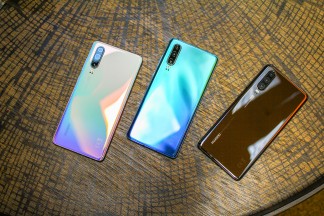
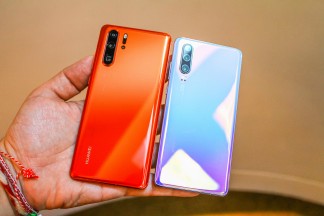
Huawei P30 color options • Amber Sunrise P30 Pro on the left
We had the P30 in Pearl White and it's... easy on the eyes, let's say. It bends light and changes color in all shades of cyan, pink, purple, and whatnot. It's also a gradient to begin with, building on the success of the P20's Twilight paint job.
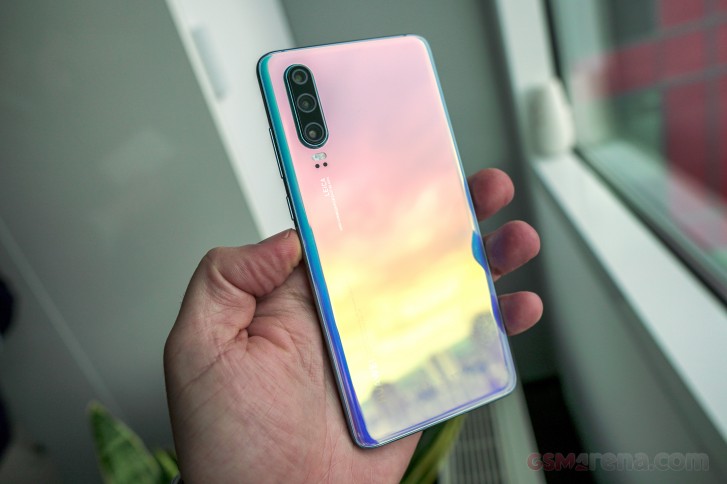
That's not to say we're not also liking the more incognito Black option, seen here on the P30 Pro, but also available on the P30. This one does make fingerprints more visible though, while the lighter colors mask them better.
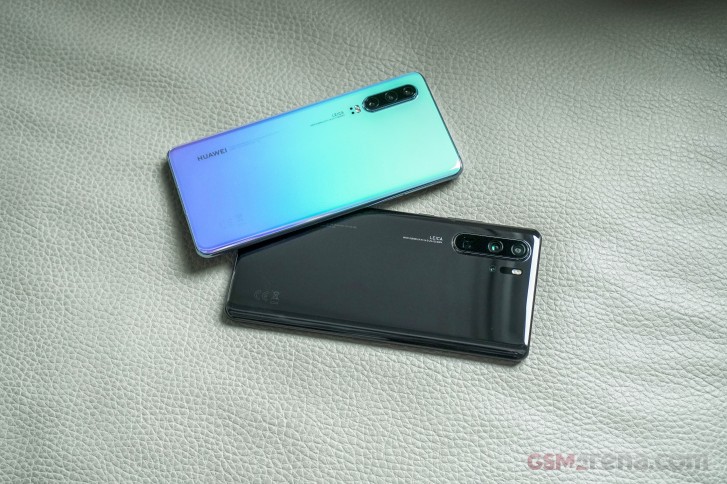
Both models are the typical glass sandwich, but only the Pro is properly dust and water resistant (IP68). The P30 is only IP53-rated, which means dust may enter but won't interfere with functionality, while only spraying water is guaranteed to be kept out - no splashes, and certainly no submersion.
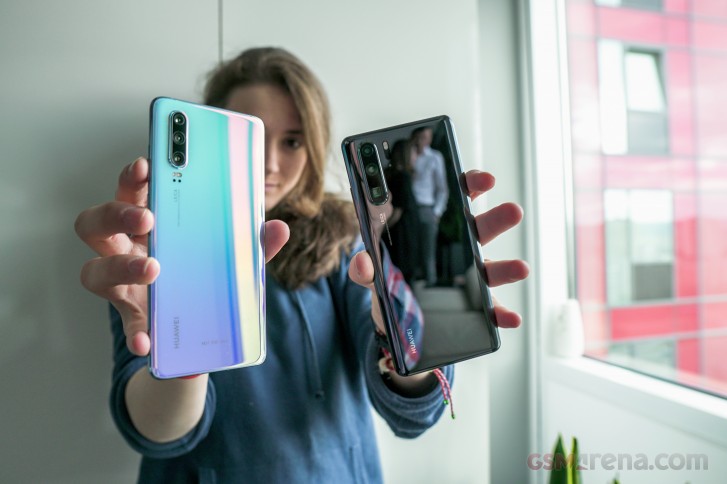
The selfie camera notch on the front could pass for a water drop, though it doesn't have the most fluid of shapes. It is quite small though, which is nice. It's also one of few design clues taken from the Mate 20 - some components, yes, but design - not so much.
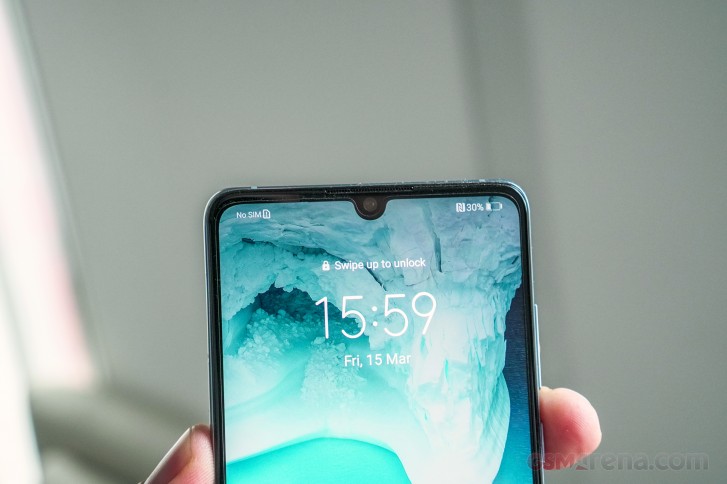
There's not much in the way of bezels around the display either, which is similarly scoring the P30 points in our book. It's an AMOLED display too, unlike the Mate 20 situation where Pro was AMOLED and non-Pro was LCD.

And the screen being AMOLED, Huawei's
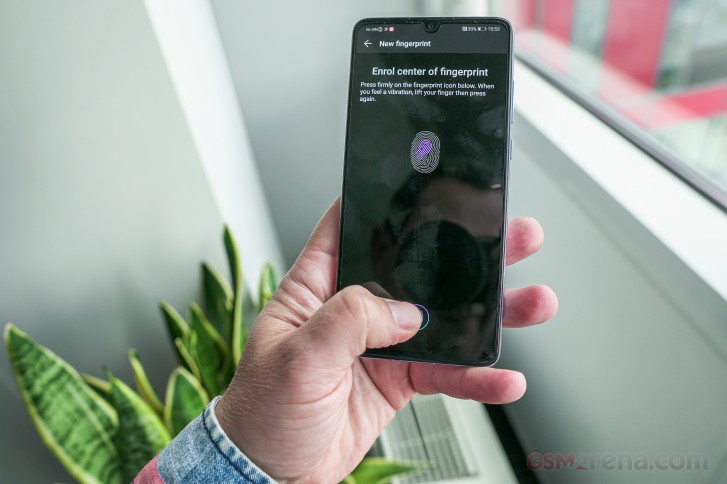
There's some more conventional stuff to be found around the P30. There's the USB-C port on the bottom, the loudspeaker to its right. A 3.5mm jack is on the other side, and this is one feature the Pro lacks - same as with the latest Mates, the non-Pro wins. The primary mic is in here as well.
On the right side you'll find the P30's power button (red accent in it, of course), and the volume rocker. On the other side is the card slot, and... Huawei's push for its own NM standard made little sense when the Mate 20 launched, and this hasn't changed. There's dual SIM capability on the P30 and the second slot is shared with a Nano Memory one - we're treating it as a dual SIM device with non-expandable storage, essentially.
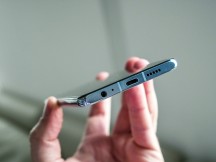
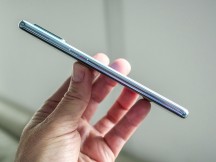
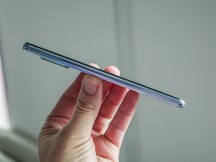
The right things on the bottom • Controls on the right • Dual SIM slot on the left

Huawei P30 camera samples
We grabbed a few quick samples of what we had around us, but it's not really the most exciting of subject matter. Of course, we'll be taking more photos when we get a review unit at headquarters.
This first batch is from the main camera, the second row is shot on the ultra-wide and the third set is from the actual 81mm-equivalent telephoto. And then, for good measure, the same scenes captured at the '5x' setting the P30 has to match the Pro, without actually having a '5x' module.


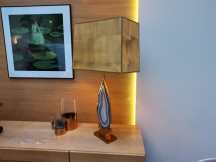
Huawei P30 main camera samples



Huawei P30 ultra wide camera samples


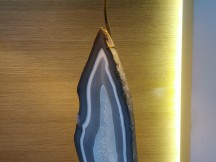
Huawei P30 '3x' telephoto camera samples


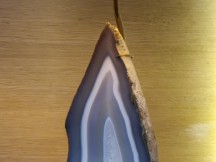
Huawei P30 '5x' camera samples
Wrap-up
Huawei's done it again and released a pair of compelling high-end devices with the P30 and P30 Pro. We only spent a brief hour with the P30, but judging by our two weeks of reviewing the P30 Pro, and having some experience with the latest Mates, we can safely assume the P30 will be a properly good smartphone. Those are just our initial musings, however, and we'll be sure to thoroughly test the P30 once we get the chance. Stay tuned.


0 Response to "Huawei P30 hands-on review"
Post a Comment